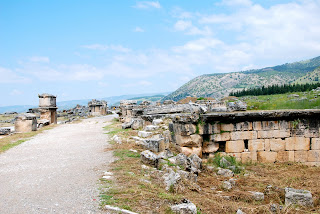Icebreaker Activities:
In a circle…
Introductions and Favorite Things:
In a circle, each person stands, states their name, age, hometown, and three things they like (nature, ice cream, tennis).
Pass the ball/hula hoops

Stand, hold hands, introduce a ball or hula hoop to be passed around the circle without hands letting go. Add another ball the other direction.
Run to the center if…
A leader reads phrases (you have brown eyes/you like Fanta better than Coca Cola, etc.). If it’s true, participants run to the center. They return to the circle for the next phrase.
Birthday Lineup
Participants line up according to birthdays. Leader points out January and December, then lets the participants figure it out.
Molecules
This game was new to me and was my favorite Icebreaker from the camp. It begins with the leader calling out a number, for example “4,” and everyone forms groups with 4 people. The number should divide the group evenly to begin. Once groups are formed, the leader calls out: “Molecules, molecules, now we’re in groups of 7.” Everyone must run around and find people to make their group 7. Whoever doesn’t find a group in time, is out. The game continues until there are just a few people left. It is an excellent icebreaker and requires no materials.
Teambuilding Games:
Square Puzzle
Needed: 2 pieces of construction paper/team
I made these puzzles by cutting construction paper into large squares, then cutting the squares into 10 pieces. Each member of the team was given at least one piece and the team worked together to fit the pieces back into a square shape. This worked very well.
Trolley Walk with Ropes only

Needed: 2 long pieces of rope/team
Because we didn’t have the long boards typically used in team building retreats for the trolley walk, I thought that just tying the kids legs together with rope would work. It sort of did except for when the first person on a team took off at full speed and nearly took off the legs of their teammates. Using only ropes would be fine, but the method of tying the legs together needs to be such that the rope won’t tighten on their ankles if pulled.

Needed: 1 bucket filled with water/team
The idea is that the teams lift the bucket with their feet together—their hands must stay on the ground—and the team that can hold their bucket in the air the longest wins. In practice, this activity was much more tortuous than anticipated. I’d modify this activity by adding different instructions “lift, move as a group to the left, set down, lift;” adding more water; and placing the emphasis on spilling not endurance.
Needed: 1 pack of straws/team, 1 roll of tape/team
Teams have 10 minutes to build a tower from the straws and tape as high as possible. When time is called, the team must not touch the towers. 30 seconds are called out. The highest tower that stays standing for at least 30 seconds wins. This worked very well.
Relay Races:
Balloon Pop
Lots of balloons, supplies for whatever is written on the instructions. We used 1 apple, 1 spoon, 1 coin, 1 bucket, and 10 balloons per team.
Way more complicated than necessary. Children raced to the bucket, popped a balloon, and followed instructions written on a slip of paper inside. There were 5 variations: walk on your hands and feet like a crab, hop on one foot, spin 5 times and sing the alphabet, balance a coin on your nose, and balance an apple on a spoon. It would have been easier to just choose one of these tasks and have a traditional race, the different instructions made it difficult to monitor and confused the smaller children.
Sponge Race
Needed: 1 bucket/team, 1 sponge/team; 1 “fill” bucket of water
This was super easy and worked very well. Each team was given a sponge and a bucket. At the opposite end of the field was a bucket with water. Like a traditional relay race, team members took turns racing to the fill bucket, filling their sponge with water, racing back and squeezing into their teams bucket. The game ends when there is no more water in the fill bucket. The team bucket with the most water wins.
Useful Websites:
Herb identification in Bulgaria
Fire Safety for kids in Bulgarian
Games and activities for kids in Bulgarian
Useful Websites:
Herb identification in Bulgaria
Fire Safety for kids in Bulgarian
Games and activities for kids in Bulgarian

















































